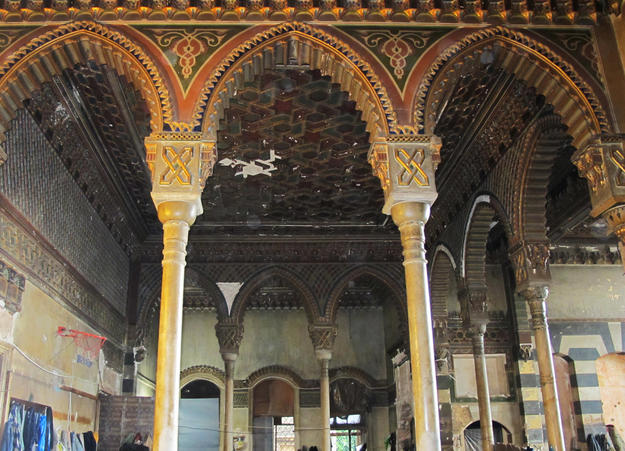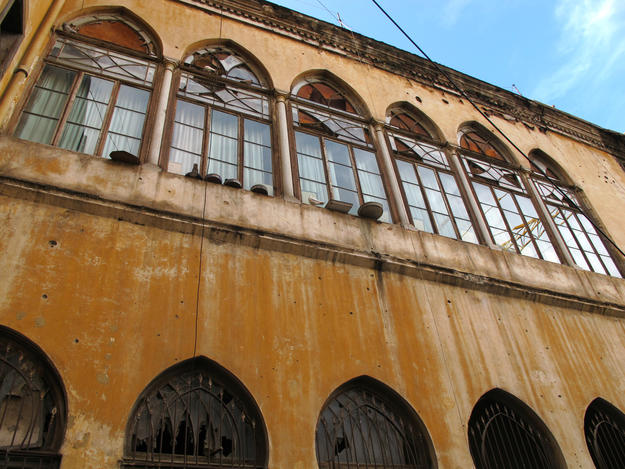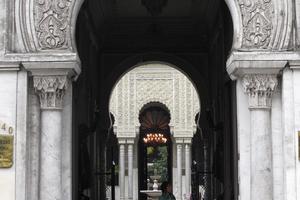Heneine Palace
2016 World Monuments Watch
Heneine Palace is one of the most remarkable buildings in Zokak el-Blat, once a bourgeois garden district outside the old city walls of Beirut. The house was built in the late nineteenth century, during the final years of Ottoman rule, when Zokak el-Blat was an area of elite homes surrounded by orchards and gardens that was rapidly urbanizing. The plain exterior of the building concealed an unusual Moorish-inspired interior, with fountains, plaster decoration in geometric motifs, and arcades of crenellated arches separating the different spaces. A long list of illustrious occupants have graced these sitting rooms: from the Russian nobleman for whom the palace was built, to the Mezher family of local landowners, who rented it to one of the founders of Beirut’s French School of Medicine. Between 1914 and 1936, the building housed the United States Consulate-General, and it also served as a consulate of the Netherlands. Starting in the 1940s, the upper floor was rented to the writer, philosopher, and art collector Dr. Dahesh, whose collection of European academic art later formed the basis of New York’s Dahesh Museum of Art.
With the death of the last owner in 1970, the Heneine Palace was abandoned. After the outbreak of civil war in 1975 the ground floor became home to displaced families, who used makeshift walls to subdivide the large spaces. By 1990 these last occupants had been evicted and the palace now lies empty and decaying. The building has multiple owners, without clear agreement about its future, at the same time as the pace of real estate development in Zokak el-Blat has been intensifying.
The ravages of war have taken their toll on Beirut’s historic buildings. Many buildings were damaged in the conflict and were later abandoned, and yet more have been lost since then to postwar redevelopment. The Heneine Palace was designated a landmark in 2010, but even this measure may not be sufficient to secure the building’s fate, as is attested by the shell of the neighboring Akar Palace, which was almost entirely demolished overnight in 2011. In response to this relentless attack on heritage, Save Beirut Heritage and other organizations as well as ordinary citizens are demanding that Heneine Palace be preserved and put into public use so as to be enjoyed by all. The 2016 World Monuments Watch supports this burgeoning movement and recognizes that Beirut’s vibrant future will be enhanced by balancing development with the preservation of historic urban structures and spaces.
Watch Day in 2017
Save Beirut Heritage joined forces with The Civil Campaign to Protect Dalieh of Raouche in a Watch Day celebration of the city’s heritage. With support from World Monuments Fund and added contributions gathered from local fundraising, the two groups organized a series of city-wide public engagement activities that drew attention to the plight of Beirut’s built and natural heritage in the face of rampant redevelopment. Joint events included public discussions, site interventions and installations, school workshops, guided tours, concerts, film screenings, and street fairs. The events took place during the Ministry of Culture’s “Heritage Week” and Beirut Design Week in May 2017, and drew thousands of participants with the common goal of advocating for the protection of their cultural heritage.





